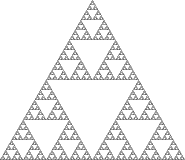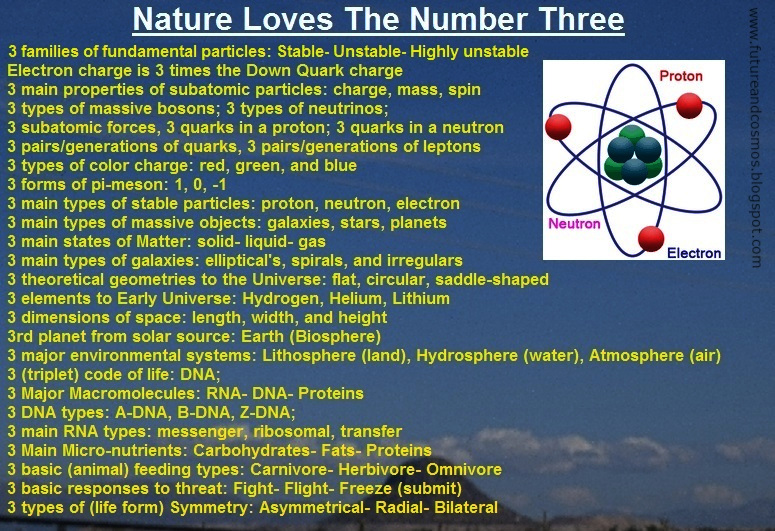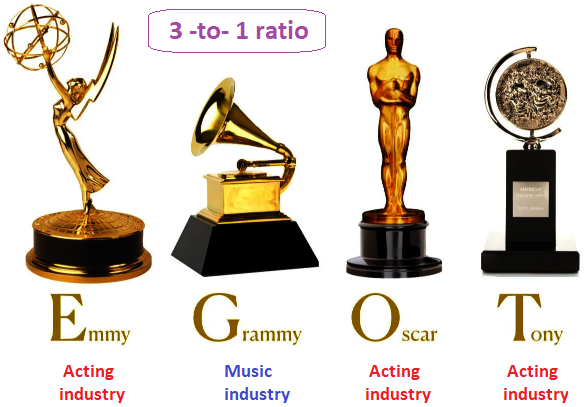| Page 1 | Page 2 | Page 3 |
3s Enthusiasts as of June 6th, 2025
For those unfamiliar with the concept of "threes" let me offer a (Levi jeans styled) watch/coin pocket quantity of references which explore the phenomena from different perspectives:


|
When I first started collecting examples of "threes" more than six decades ago, I didn't think of it as a "study". It was simply a curious feature that I was attracted to. Neither did I use words such as "collection, list, compilation, hobby, pattern", etc... It was simply fun and interesting to encounter the sequence and make note of it from multiple subjects.
I did not realize in those early years that my efforts would persist, despite the occasional negativity I received from those who would be viewed as having an average, everyday, commonplace, colloquial... "pedestrian" level of intelligence, though some of these over the years began to develop into a speciality with respect to a self-study interest. In other words, some people do acquire an observable increase in their intelligence over time, to be contrasted with those whose experiences and education lead them into realms of exploration whereby they are deemed to be an expert in their respective field of interest. In other words, those with a common place intelligence acquire an enlargement of their intelligence in routinely acquired commonplace terms.
Nor did I realize at the time that my interest in the "threes" would become a life-long study which has required the periodic adoption of different language models (vernaculars, idioms, accents, jargon, slang...) of different subjects from Science, Religion, Pseudo-science, Art, Music, Architecture, Statistics, Cooking, Sports, Military Strategy, Economics, Mythology, Psychology, Journalism, Medicine, Dentistry, Mathematics, Gardening, Biology, Botany, Pharmacology, Education, Philosophy, Sociology, Linguistics, Political science, Anthropology, Gaming, Eastern philosophy, Computer science, Nutrition, Particle Physics, Astrology, Geology,Various cults and "alternative" orientations or our presumed reality, Astrology, Tarot cards and other assumed 'predicators' (soothsayers) of future events, such as Business, and the STtock Market, etc...
Every subject carries with it one or more models of how to arrange words and symbols to express similar, the same, or different vantage points of perception which are sometimes better understood as overlapping cognitive paradigms if there is a wide-berth allowance of using metaphor to align them as if the different subjects constituted a marketplace (of ideas) where interactivity of shared views requires the use of a basic lingua franca.
Lingua franca: language used as a means of communication between populations speaking vernaculars that are not mutually intelligible. The term was first used during the Middle Ages to describe a French- and Italian-based jargon, or pidgin, that was developed by Crusaders and traders in the eastern Mediterranean and characterized by the invariant forms of its nouns, verbs, and adjectives. (Which later helped linguists identify a recurring 3-part Word Order pattern to all languages.)
A study of the Threes Phenomena as I have undertaken compels the requirement to look at various other recurring cognitive pattens, from which I have deduced the presence of an underlying 1-2-3 developmental sequence over the expanse of biological and psychological time. A study of "threes" as a reurring cognitive paradigm necessitates a working comprehension of duality, singularity, plurality, and transitional states, dead ends, digressions and reversals of orientation.
Interestingly, the more references to the presence of dualities that I encounter, the more evidence I acquire as to the factuality that those who have come to make lists of dualities and reference the insufficiency of the pattern; the easier it is to claim that these researchers have not as yet developed the realization of a developing consciousness along a 1-2-3 pattern, because they have not developed the necessary radar which can identity the multitude of 3-patterned blips on the screen of acknowledgement. Attempts to make them aware is like trying to convince cartoon characters that there exists a reality outside their own day-to-day preoccupations where their colleagues interact with them in a like-minded way. An advance in the study of threes (that I am now referencing as trichotomization) requires an appreciable cognizance of those who are using words/ideas substituting for enumeration" such as singularity, duality, plurality (more than 2, more than 3, 3 + 1, four or more...), and geometric forms,... even if such researchers are not aware of advances in threes research. Just because they are oblivious to or ignorant of your research efforts in the field of trichotomization doesn't mean you have to share in a similar limited mindset about their research. Let's face it, the current spectrum of threes research is going to leave them far behind at small watering holes that are shrinking not only due to increased visitors whose commonplace intelligence is increasing into a '2' realm of acknowledgement, but are drying up due to occupational assertions of control and ownership using the bullying, lies, manipulation, collusion and other nefarious tactics inherent in conducting business, religion, government and other social institutions.
See extended Footnote On Dualities.
Once you recognize their pre-occupations, the footprints of duality/dichotomy being recognized as a standard among the foregoing subject-languages, with a few venturing into the domain of using or intimating the perspective of Trichotomization, you find that your once simple listing of examples has transformed you into an investigator of cognitive activity... to name but one venue of exploration. Yet, it is appropriate for those beginning a similar trek of exploration, to provide them with some measure of my personal transformation from cataloguer to researcher, and to recognize that despite the claims by some Mathematicians that Mathematics is Queen of the Sciences, its vernacular is rudimentary, coarse, and acquires the eccentric personalities of its practitioners with their biases, preferences, and ulterior interests.
Whereas Mathematics was once rightly held as a superior model of thinking, it has become a social media platform where individuals and groups and express metaphysical opinions akin to ancient auguries..., ceremonialized recitals of ancient mathematicians..., mathematical formulas used as sing-a-long prayers, incantations, and meditative chants used as injunctions for the world to make-believe they too are privy to some grand revelation otherwise denoted as an Enlightenment that is useful for paving the away to a Purity of Mathematics which some might called Nirvana, or Heaven, or to be one with the supreme mathematician called God. All of which signals that there is nothing magical, mystical or wondrously marvelous about Mathematics when it is just another model of psychological and physiological directives being used to express a mathematician's body language as it changes due to age, diet, climate and preferenced socially accepted and distributed poisons ingested by routines of rationalization invested in a designed indebtedness to an underlying Persistence in Dichotomization, (even though there are cautionary references against such a usage:
- The persistence of dichotomies in the study of behavioral development, by Timothy D Johnston.
- The role of dichotomies in social theory, by Mark Carrigan.
- Beware Dichotomies, by Charles Kowalski & Adam J. Mrdjenovich.
And yet, none of the accounts of Dichotomization explicitly reference Trichotomization.
Though some might wonder why I took the time to make a list of "threes" in childhood and continue to do so over six decades later, since they would simply relegate their observations to a generalized "there's lots of examples", in hindsight, I actually wanted to have visible proof in order to make a reflective summary as a type of exterior extension to memorization. I was actually astonished and dumbfounded to not find anyone else even making an off-handed reference to what I thought were everyday observations which others must surely see... yet no one I encountered ever made mention of the pattern. And on those occasions which I made a reference to such, they were either taken aback by my ability to recite several examples without any verbal or intellectual stammer, stutter, or flutter, or they engaged in some dismissiveness, changed-the-subject deflection, or invective disparagement.
No less, though the father of a friend spoke of yin and yang examples, he did not speak of threes nor any other pattern... but most people were not even paying any reference to any particular pattern at all. Their interest was simply to get a job, make money, get a car (or motorcycle), get a girlfriend, go to a party, watch some sport on TV and then attempt some measure of reenactment by playing the game in a park with others, or be privately engaged with emotionally wrestling with some religious defined sense of morality. In other words, pretty mundane stuff where very little knowledge, memorization or above average intelligence were needed in order to effect an appearance of social normalcy from their otherwise disorientations of reality that might at any moment be considered by others as craziness if made available for peer-group review. By keeping silent and acting like everyone else, they more easily concealed their ignorance and day-to-day consternations of reality, due to some internalized conflict being harbored.
While making a collection was quite engaging, though I may have looked quite unusual to those observing such a young person sitting at a table in a library with stacks of Encyclopedias set up nearby (since there were no public or personal computers at the time), I was actually too deeply engaged and enthralled... as well as intrigued to find so many examples of this phenomena, yet could not find anyone making mention of it... all of whom thus ended up in some place of meandering superstition like Numerology, Astrology, palmistry, divination, Western religion, Eastern philosophy, mythology, science fiction, poetry, business, the stock market, mysticism, Military service, esoteric metaphysics, New Age contoured business orientation, Paganism, witchcraft, dream interpretation, politics, law, policing, Music, medicine (which includes dentisty), primordial imitative therapy, Mathematics, Psychology, Gaming... and other conjectures frequently defined as a provisional directive for finding truth, or at least desirable financial income with or without an accompanying label of professional status and recognition.
I don't exactly recall when I did encounter my first example of someone else who made mentioned of the pattern, yet it was most likely in some context in reference to a particular type of content, such as triads in Mythology or ancient Egyptian religion; where collections of three-part entities are widely known and accepted as factual, though the examples typically represent some fantasy or some conceptualized yet unrealized metaphysic of human cognitive activity as it was practiced centuries ago. In any respect, since those early days, I have since come across several other people who have taken the time to make a list of the pattern, though many of them continue to portray examples from a selective segment of knowledge they are most interested in. However, there are notable exceptions, one of whom is Michael Eck and his extraordinary Book of Threes compilation. However, it is not unusual to find someone who interprets the recurrence of "threes" with an inclination to think in terms of some magical, mysterious, mystical implication related to some cosmologically-aligned spirituality theme with a magnified importance claimed to be overlooked by most, and thus they are privileged to be one of the few whose perceptual acuity possess some hitherto unrecognized sensibility, intelligence, erudite wisdom and overall rare-ability-composite that most people don't even realize exists.
In as much as I am providing a list of "threes" from different subjects, I am also providing a means by which those who have paid witness to the phenomena on their own, have some semblance of an intellectual sanctuary which affords them an opportunity to learn more and quite possibly enter into the inner corridors of appreciability, though they may not have made an extensive list on their own, nor as yet reached the point for further enlarged considerations of the recurring phenomena. Also, it is a means by which those whose consciousness has ventured into this area of perception can identify that they are like others with a similar sensibility and that their interest is not weird or strange or crazy, when compared to others in their immediate social environs whose own perceptions are primarily concerned with the humdrum interests most people share in their dominantly consuming day-to-day dog-eat-dog struggles. In short, My list of threes is an avenue for acquiring the vernaculars of language, thought and intuition needed for further individualized and collective exploration.
Yet, making a list of threes examples (or whatever pattern occurs to one's particular sensibilities in a given environment), is not enough. Eventually your curiosity may develop into attempting to discover some explanation of such a pattern, or using the pattern for some commercial interest, if not simply a tool by which to manipulate others. And though you may at first come to agree with someone else's interpretation(s), you may be of a mindset to keep it handy as a pocket reference while you seek to ponder whether it provides a reasonable explanation to fulfill the necessary equation of the multiple variables you wish to apply. Does the person's explanation actually fit with the necessary serviceability you think is necessary when confronted by some variable that you think is important? Indeed, you may think that the explanation, viewed as a type of equation, needs to be 'tweaked', if not totally revised. Whatever the case, whether one equation is not enough or needs to be accompanied by others, your explorations may well serve the next generation of those seeking a greater truth by way of a 3-stepping stone path that anyone may used to ford whatever precipice or obstacle they may encounter. Such stepping stones do not belong to any cult, whether engineered by some main stream religious precept or indulged in limited membership club or secret society... much less main streamed commercial enterprises such as those advancing some particularized "rule of three". None of them have any right to claim ownership.
For me, religion, metaphysics, and other more conventionalized philosophical doctrines are not providing an answer. They are little more than distractions and excuses, which are typical for those whose sensibilities are tied to the antiquated formulations of dichotomy.
Yet more importantly for a developing thesis with widespread applicability, is that many people are not aware their sensibilities are directed along a path where they are experiencing a transition into a third consciousness world-view ability which is coming into conflict with the practiced standards of a society steeped deeply in dichotomization; but having no conceptual framework for the realization that a Trichotomization of consciousness is very real, and is not some metaphysic as many ideological "threes" have been for those whose minds were fashioned by biology and society to perceive, perpetuate, and perpetrate a world view which has created a tenured Persistence of Dichotomies whose adherents subjugate the public to be ill-prepared for a developmental shift in consciousness, and thus disproportionately misinterpret the behavior and ideological content of those in transition or making sustained or episodic leaps in the direction of or along the path of humanity's developing stream of consciousness.
Note: You will not typically come across a writer of Biology or Zoology focusing on one or more (explicitly referenced) patterns-of-three as are readily found in religion, mythology, fairy tales, science fiction, metaphysics, astrology, writing, speech creation, photography, art and other separate-interest genres where an allowance is made to state the obvious. Such allowances are not permitted in the field of particle physics, even though there are multiple patterns-of-three. The same goes for audiology and linguistics. And even though Einstein's famous equation of E = MC2 (Energy equals Mass times the speed of light squared) is a pattern-of-three, you may not have even heard of it being referenced as a cognitive expression of a "3". Indeed, a short survey of other formulas illustrates this one "3" instance is not alone, despite the Persistent Dichotomies existing as a foundation in Mathematics... which presents us with a problem to be discussed at a later time:
3 ("powered") "arbitrarily chosen" Electronics math tool: 10-15 10-12 10-9 10-6 10-3 ... 103 106 109 1012 1015 ...etc.
3-patterned formulas:
| C = pi x D | (Circumference of a Circle) | E = H x V | (Planck's Constant) |
| A = L x W | (Area of a Rectangle) | P = I x E | (Watt's "Law") |
| A = 1/2B x H | (Area of a Triangle) | E = I x R | (Ohm's "Law") |
| A = pi x R2 | (Area of a Circle) | E = V1 + V2 | (Kirchhoffs Voltage Law) |
| E = M x C2 | (Einstein's formula) | P = R x B | (Percentage formulas) |
| Z = Eg ÷ Ig | (Thevenin impedance formula) | A2 + B2 = C2 | (Pythagorean theorem) |
In making a list (collection) of "three-patterned" ideas, you may prefer to focus on a single topic such as Astronomy/Cosmology, Physics, Biology, Sports, Fairy tales, History, etc... But if you make a collection from a multiple array of subjects as I have done, you can't help but come across the realization that the pattern comes with other patterns, such an an underlying "1-2-Many" or "3-to-1" themes, with the latter example requiring a moment of reflective explanation:
Some recognized "threes" in Fairy tales actually are 3-to-1 ratios:
- 3 Billy goats Gruff and 1 Troll
- 3 Bears and (1) Goldilocks
- 3 pigs and 1 wolf
- 3 fiddlers and (1) Old King cole
- 3 fingers used to hole 1 pen, pencil, paint brush.
- 3 coin combinations to 1 paper/plastic vending machine alternatives.
- 3 main (US) grades of gasoline based on octane rating: regular, midgrade, and premium. Plus 1 Diesel fuel oil and/or flex fuel
- 3 Alternatives: Propane, Natural gas, Electric charge
- Many countries only offer two grades
- Some countries may offer four or five grades, all based on octane ratings:
- China offers 89, 92, 95, and 98 RON fuel grades.
- Indonesia offers 88, 90, 92, 95, and 98 RON fuel grades.
- 3 most common methods for measuring octane rating:
- Research Octane Number (RON).
- Motor Octane Number (MON).
- Anti-Knock Index (AKI), also known as (R+M)/2.
- 3 to 1 ratio in Mendelian genetics, sometimes displayed as 9:3:1
- 3 fingers used to hold 1 pen, pencil, paintbrush
- 3 fingers used to hold two chopsticks
- 3 persons in 1 godhead (Christian Trinity)
- More examples here: 3 to 1 ratios A
Interestingly, for some researchers, you may begin to see that your list, arranged chronologically in terms of our present human perception of life and its place in the universe over time and distance... exhibits a history of our cognitive development which can initially be framed and categorized as a 1- 2- 3 development. This development can be categorized both with a Cardinal system of 1-2-3... counting and an Ordinal 1st- 2nd- 3rd... arrangement, as well as mixtures thereof. By applying enumeration to the ideas found in multiple subjects, we can get a much broader appreciation of how human cognitive activity is adapting to different cultures, languages, and environmental pressures, whether or not we are academically trained or have trained ourselves to do so.
My approach is quite different from others interested in developmental cognition being surveyed over vast periods of time:
- New thinking: the evolution of human cognition by Cecilia Heyes
- Unraveling the evolution of uniquely human cognition by Evan L MacLean
- A natural history of the human mind: tracing evolutionary changes in brain and cognition, by Chet C Sherwood, Francys Subiaul, Tadeusz W Zawidzki
- Historical Roots- History of Cognition by Mehgan Andrade, Neil Walker
- Historical Development of Human Cognition A Cultural-Historical Neuropsychological Perspective by Alfredo Ardila
- Unfolding the evolution of human cognition by Jacob A. Miller, Kevin S. Weiner
- Origin and evolution of human cognition by Gerhard Roth, Ursula Dicke
- History of Cognitive Psychology by Robert Graham, Scott Griffin
Note: if you arrange the examples on the above list in their chronological appearance of development, what we have is an expressed historical time-line of "threes" occurrences which follow one after the other in a type of succession whose sequential math formula has not been worked out, because the idea for doing so is far removed from conventional considerations of existence's flow of development over time where life as we know it may be but an extraneous variable, and not a major theme of existence based on human ego wanting to view humanity as the sole or major reason for existence to have arisen. In other words, one event of "three" comes after another event, followed by another event, even though in multiple instances we cannot distinctly discern nor identify a given "three" pattern which may be incomplete or some part has become lost to time and disintegrated much in the manner one encampment/civilization builds upon the resources or ruins of a previous encampment/civilization. Only some negligible trace may remain or not. Nonetheless, what we come faced with is the topic of mathematical set theory involving patterns-of-three.
Looking at a list of threes, particularly when we focus on biological examples cast in the framework of Nature's overall development with respect to the Universe and Life's place within it... or alongside it, we can't help ourselves but to use the language of biology with words such as maturational, episodic, reversal, punctuation, intermittent, parallel, convergence, mutation, hybrid, etc... Hence, for one example, I frequently use the phrase "a 1- 2- 3 maturational development sequence"; more recently conveyed in the notion After Every Third, which gives the impression that Nature is counting and/or playing some sort of sport... such as baseball, since the patterns of baseball apparently reflect basic conceptualizations to be found in the superstitions of religion.

The following are a few examples of a Triple crown designation. Use of the words "Quadruple Crown" are rare but is sometimes used to describe the EGOT (or Grand Slam) award in the entertainment industry— comprising the Emmy, Grammy, Oscar, and Tony Awards; all winners of which are selected by those in the collective entertainment industry... much in the manner in which businesses are left to police themselves (due to government collusion) and government financed (and thus sanctioned) over-sight committees are placed in charge of over-seeing government activities but are not required to announce any conflict of interest, bias, discrimination, etc... In other words, the public is wholly ostracized so that industry kings and court can marginalize and minimize everyone else. It is difficult to measure value when valuation is dependent solely on personal interpretation or reliance on sales. In other words, the value of a grand slam in baseball is highly visible and countable, whereas a grand slam in the Entertainment industry relies primarily on the account of a collection of personal prejudices.
- In baseball, after three strikes are made by one team, then the next team comes to bat. This is a set-of-three alternation.
- In basketball, we see the three alternative scoring possibilities of 1-point (free throw), 2-points (common), 3-points (exceptional)
Sociologically speaking, the 3-point variation of scoring in basketball can be viewed in a tripartite division related to 3 social classes:
- 1-point shot is charity, or a social given such as welfare and social security.
- 2-point shot is most common and reflects the working class.
- 3-point shot is akin to the wealthy or as an object of adoration, desire, contempt, exaltation, "a metaphyisic/dream" for the lower classes... much in the manner of a Triple Crown in Horse Racing, Cycle Racing, etc...:
-
Triple crown in Acting: Refers to actors who have won a competitive 1)
Academy Award, 2) Emmy Award, and 3) Tony Award. The most common order in which these awards have been won is Tony, Oscar, and Emmy.
- The Grammy award stands apart from the 3 acting awards due to its application to the music industry.
- Triple crown in Basketball:
- American Basketball: An individual player winning an NCAA championship, NBA championship, and Olympic gold medal during his career
- European Basketball: a club winning their country's top-tier level national domestic league, their county's primary national domestic cup, and the top-tier level European-wide continental competition, which is the EuroLeague, all in the same season.
- Triple crown in Baseball: a player leading their league in three key statistical categories. For batters, 1) batting average, 2) home runs, 3) runs batted in (RBIs). For pitchers, leading in wins, strikeouts, and earned run average (ERA).
-
Triple crown in Football:
- Wide receiver: Lead the league in receptions, yards, and receiving touchdowns.
- Running back: lead the league in rushing attempts, rushing yards, and rushing scores.
- Quarterback: Lead the league in passing yards, completion percentage, and passing touchdowns.
-
Triple crown in Motorsport:
- Indianapolis 500 (first held in 1911)
- 24 Hours of Le Mans (first held in 1923)
- World Drivers' Championship of Formula One (first held in 1950)
- Triple crown in cycling, In American horse racing, championship attributed to a three-year-old Thoroughbred that in a single season wins the: Kentucky Derby, Preakness Stakes, and the Belmont Stakes.
- UCI Road World Championships Road Race.
- Tour de France general classification.
- Giro d'Italia general classification.
- Triple crown in Science: Graduating with degrees in math, physics and nuclear engineering,
- Triple crown in Chess: The triple crown in chess refers to the winning of the World Rapid, Blitz, and Classical Championships.
- Signature designated Triple crown in fishing: Consists of three legs, with three consecutive fishing days in each tournament. They take place in consecutive months in the first part of the year, in January, February, and March.
- Major League Eating contest Nathan’s Famous finals are our Masters, our World Cup, our Super Bowl.
-
Triple crown of Poker (In poker, the term Triple Crown is used in
three ways:)
- Winning three different events in three days at the same venue.
- Winning the WSOP (World Series Of Poker) Main Event, The Poker Players Championship, and WSOP Player of the Year in the same WSOP.
- Winning all three of the following across an entire career: 1) Any bracelet at a World Series of Poker event 2) A Main Event on the World Poker Tour (WPT) 3)
- A Main Event on the European Poker Tour.
- Triple crown of Rodeo: The Triple Crown of Rodeo is a series of annual major rodeo events which includes an annual bonus that will pay $1 million to any one athlete or collection of athletes who win first place in any three consecutive WCRA (World Champions Rodeo Alliance) Major Rodeos.
- H.O.B note: Like many a local martial arts contests claiming the winners as "world" champions, the use of the world "World" in the World Champions Rodeo Alliance is a misnomer, since there is no widespread presence of the Organization world wide. The use of the phrase "world champion" in multiple circumstances is an expressed example of egotism and not reality. It is like the kings of old that had map makers place their Kingdoms in the center of a map because they thought the world revolved around their domain. This also is a characteristic of religions which defaced statues in the past so that people would come to centralize Christian, Moslem, etc., beliefs and the hierarchy of their leaderships instead of the statuary of ancient gods.
- Academic Tripos in England: An apocryphal legend says that students used to receive one leg of a stool in each of their three years of exams, receiving the whole stool at graduation. Another tradition holds that the name derives from the three brackets printed on the back of the voucher.
- Triple crown in sailing: The Triple Crown was established in 2013 to honor youth sailors (skipper and crew) for achievement in winning on aggregated points in a series of designated championship races in the Club 420 sailboat throughout the course of a single year.
It is an old idea though present day writers think they have stumbled on some insightful connection, even when reminded of the view that the ball games of ancient Middle America were associate to their ideas of Religion and the Cosmos, with deadly consequences. Indeed, if one were to look at any sport, including the sport of warfare, the basic themes undertaken reflect the same patterns we see in fundamental ideologies being aligned. Throughout history we find the same basic cognitive patterns used in Cosmology, Religion, Politics, Commerce, Science, Mythology, Astrology, Astronomy, Metaphysics, Faith/Fate, Conquest, Domination, Slavery/Domestics/Indentured Servitude, Philosophy, Incarceration/Imprisonment/Penitentiary (effecting conditions for a person's Penitence), etc., such as the Olympic games and their relationship to ancient cultural views involving gods and goddesses. A few examples will suffice:
- What baseball can teach us about faith by Susan Sparks
- What Similarities Exist Between Religion And Baseball?
- The Ball Game of Mesoamerica
- Exploring Mythology and the Ancient Olympics by Jon Giunta
- War and Religion: A Very Short Introduction by Jolyon Mitchell, Joshua Rey
- Penitence, Plantation and the Penitentiary: A Liberation Theology for Lockdown America by Nikia Robert, PhD
Date of initial posting: Friday, June 6th, 5:27 AM
Updated Posting: Friday, July 11th, 6:52 AM

